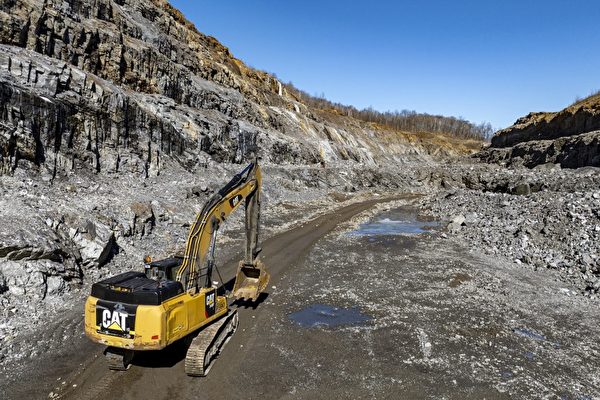Graphite has become a new focal point in the trade war between China and the United States as it is a key component in manufacturing electric vehicle batteries.
According to the Financial Times, starting this month, the United States Trade Representative (USTR) announced a 25% tariff on natural and synthetic graphite anodes imported from China. On May 14th, USTR also announced a 25% tariff on natural graphite processed in China starting in 2026.
Powdered anodes used to store charge in lithium-ion batteries are typically made from a mixture of natural and synthetic graphite.
In 2022, President Biden signed the Inflation Reduction Act (IRA), which allows qualifying new energy vehicles to enjoy tax credits of up to $7,500. To ensure supply chain autonomy and security, the act mandates that vehicles must be assembled in North America and key raw materials for battery components need to be sourced or processed in North America to a certain extent.
Under the IRA, the US government also grants some exemptions, allowing American consumers to still receive up to $7,500 in tax credits when purchasing electric vehicles with Chinese graphite until the end of 2026.
Georgi Georgiev, an analyst at consulting firm Fastmarkets, stated that graphite has become a weakness in the US-China trade confrontation.
Although natural graphite is relatively abundant, the processing of nearly all natural graphite used in battery-grade anodes and 98% of synthetic graphite production currently takes place in China.
Georgiev added, “The US government has to acknowledge that battery manufacturers will need Chinese graphite in the short term if any vehicle is to qualify for IRA tax credits.” He went on to say, “However, the US government is firmly determined to close this loophole as quickly as possible, giving businesses just a few years to almost start from scratch in building an entirely new supply chain.”
Ross Gregory, a partner at consulting firm New Electric Partners based in Seoul, pointed out that anodes account for about 50% of the battery volume but only about 10% of the cost.
He added, “Therefore, even after the passage of the IRA in 2022, non-Chinese electric vehicle manufacturers, battery manufacturers, and battery material producers largely ignored efforts to secure alternative sources.” He further noted, “Now, Washington is attempting to spur them into action through tariffs and graphite waiver requirements set to expire in a few years.”
Analysts noted that the US is a net exporter of needle coke, a precursor for synthetic graphite, and the US industry should be able to convert existing facilities into producing battery-grade anode powders within three to four years. Optimists also point out that natural graphite is abundant worldwide, with significant deposits in Canada and Mozambique.
Leading battery materials and technology company NOVONIX Limited stated on May 31st that synthetic graphite is the primary anode material currently used in lithium-ion batteries. This decision by the US government is crucial to breaking China’s decades-long dominance in building local supply chains. NOVONIX’s production process for synthetic graphite focuses on large-scale and sustainable production to drive the development of the North American battery supply chain.
However, Fastmarkets predicts that even by 2030, only 40% of the US graphite anode demand will be met by projects meeting IRA requirements.
Gregory emphasized, “Establishing a de-Chinese-ized anode supply chain in compliance with IRA requirements is necessary and will eventually be achieved,” stating, “But the process will be slow and costly.”
In April of this year, North American graphite miners lobbied the US government to impose a 25% tariff on three graphite products from China to combat the Chinese monopoly on critical materials for electric vehicle batteries. They argued that allowing graphite to freely flow from China to North America would harm their opportunities to raise funds as car manufacturers could bypass future purchase agreements by sourcing cheap graphite from China.

